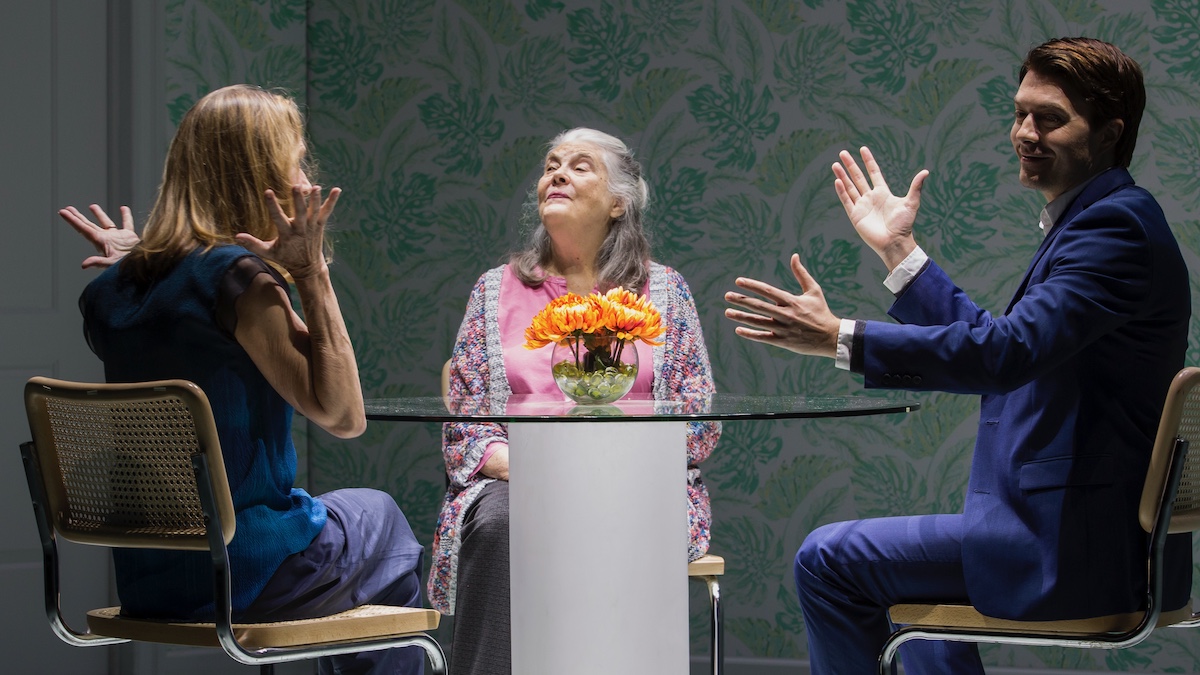
When Katie Conaway was promoted to Director of Education and Outreach at Pittsburgh Public Theater in the fall of 2015, one of her first directives was to enhance the play-going experience for patrons with vision or hearing impairments.
As Katie began to research what is new in the field, she had a conversation with PPT’s resident sound designer and engineer, Zach Moore. Zach suggested that she check out the services of Sound Associates Inc., a New York-based company that supplies PPT with its Assisted Listening System.
“When Katie first approached me about wanting to explore captioning and description options, I called Steve Harris at Sound Associates,” Zach said. “They have been creating theatre accessibility solutions for many years, so I knew he would be able to help.”
Katie was thrilled with what Sound Associates had to offer. She learned about their technology called I-Caption and D-Scriptive, which consists of a handheld device that presents the text of a play for audience members who are hearing-impaired, and also plays audio description through a single earbud for patrons who are visually-impaired.
Unlike standard audio description which requires a person to be watching the production, then reports the action live, or American Sign Language performances that need an interpreter in attendance, the Sound Associates devices are programmed in advance and therefore are available at numerous shows.
“The reason this was so appealing was it would provide maximum flexibility for our patrons. That’s what true accessibility is all about,” Katie said.
Once it was decided that PPT wanted to implement I-Caption and D-Scriptive, it was Katie’s task to figure out how to make it happen. “I knew it would have to be a team effort and require commitment from multiple departments at the theater,” she said.
The cost of the project was around $30,000 for labor, training, and equipment (and for overhauled Assisted Listening devices). With the help of PPT’s development and production departments, Katie began budgeting and grant writing.
The lion’s share of the funding came from the Allegheny Regional Asset District (RAD), which leverages a sales tax in the Pittsburgh area to generously support local arts and amenities. “We are a more inclusive and welcoming community when everyone can participate in the outstanding art and cultural offerings in our region,” said RAD spokesperson Julie Goetz. “It’s clear to RAD that Pittsburgh Public Theater is dedicated to substantially advancing the cause of accessible theatre for everyone. We know this new technology is being combined with their excellent leadership and programming to attract people who might otherwise not have been able to attend.” Additional gifts from the FISA Foundation and the Pennsylvania Council for the Arts allowed the project to move forward.
The next step was for Katie to spend a week in New York with Sound Associates staff members, learning how to get the technology up and running. While Pittsburgh Public Theater is the first regional company to use I-Caption and D-Scriptive, it is already available on Broadway and in Las Vegas. Katie was taken to the Minskoff Theatre to see a production of The Lion King so that she could better understand using the device from a patron’s perspective.
When Pittsburgh Public Theater’s season started last fall, Katie began experimenting with how many times she needed to see a show in order to write cogent audio description. While blind patrons can follow the dialogue, crucial visual elements of the play’s action are communicated through D-Scriptive. “I work very hard not to speak over the actors,” Katie said.
After seeing a production about four times, from the staff run-through to opening night, Katie is ready to record. At this point the show’s timing is set so the descriptions will be accurate and correctly placed. Also recorded in a pre-show segment is information about set and costume design, and tips for navigating the theatre.
Katie records in the sound booth with Zach Moore, and the D-Scriptive technology interfaces with the sound and light boards. If for some reason a show goes off the rails, D-Scriptive resets according to light cues.
For I-Caption, Katie is assisted by Shaun Hall, executive assistant to The Public’s leader Ted Pappas. Shaun’s first task is to load the script into PowerPoint. He then uses a software program provided by Sound Associates to connect PowerPoint with I-Caption. Once the timing of the show is established, its dialogue progresses in real-time across the handheld device’s screen.
Zach notes that I-Caption can serve a variety of purposes. “Captioning can benefit audience members who have a hard time following conversations or understanding dialects, and of course those with declining hearing. Some people might not realize that this service can help them,” he said.
Since I-Caption and D-Scriptive will be available at every show during the second half of each run (about sixteen performances), more people at Pittsburgh Public Theater will be able to give these state-of-the-art gadgets a try. “It’s very exciting that we are able to offer our patrons the exact same technology they can find on Broadway,” Katie said.
With PPT’s exciting 2017-2018 season about to begin at the end of September, Katie is working to alert the appropriate communities that these services are now available, free of charge. She already knows that the existing patron base has benefited from the new technology: Three different couples have told her that it saved their subscriptions. And I-Caption and D-Scriptive have started to bring new people into the theatre as well. According to PPT’s Producing Artistic Director Ted Pappas, “We’re excited to open our doors to new audience members who may not have had the opportunity to enjoy our productions before.”

Inspired by True Events: A Conversation with Playwright Ryan Spahn

Plays About Technology

